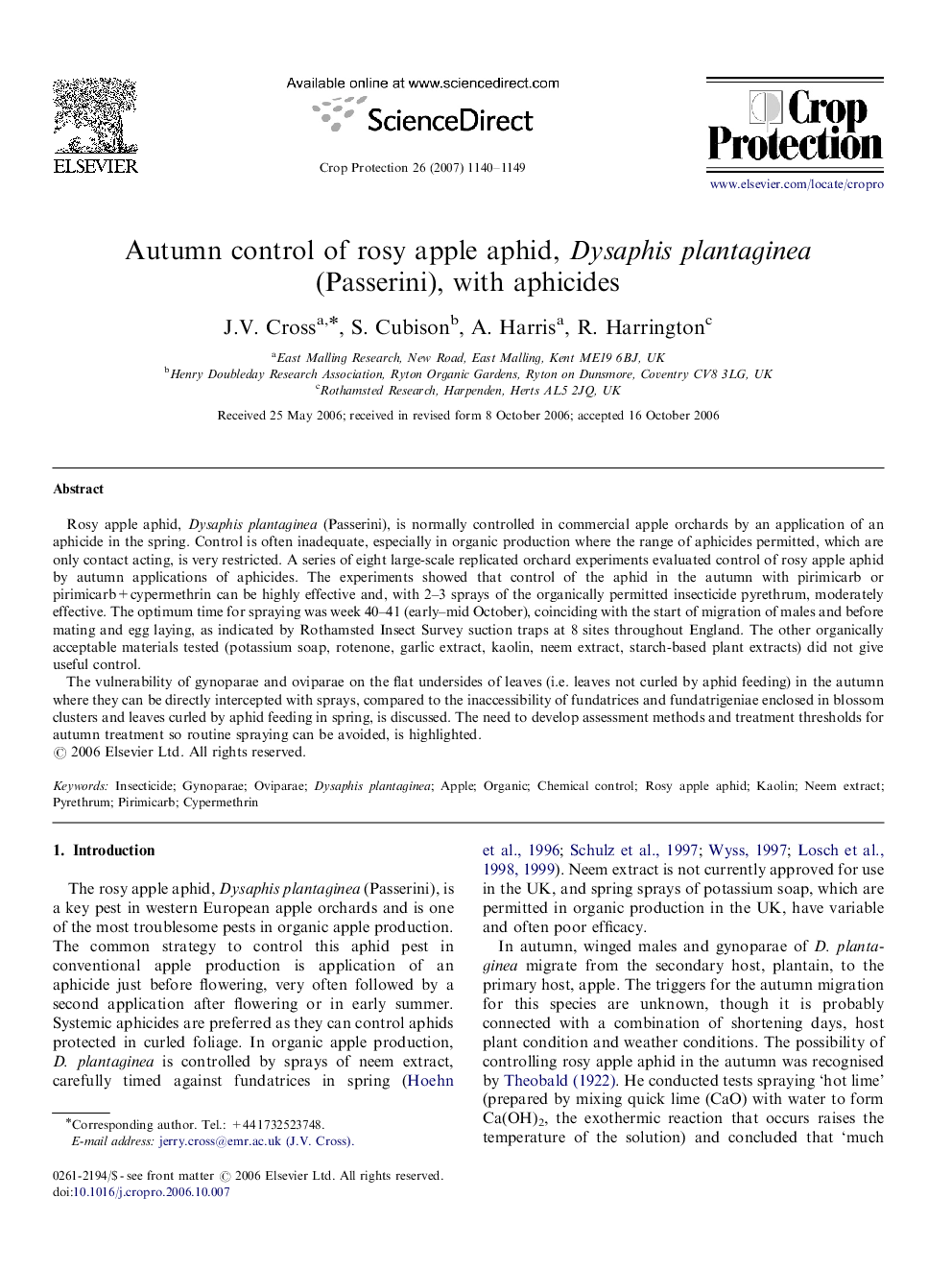| Article ID | Journal | Published Year | Pages | File Type |
|---|---|---|---|---|
| 4507948 | Crop Protection | 2007 | 10 Pages |
Rosy apple aphid, Dysaphis plantaginea (Passerini), is normally controlled in commercial apple orchards by an application of an aphicide in the spring. Control is often inadequate, especially in organic production where the range of aphicides permitted, which are only contact acting, is very restricted. A series of eight large-scale replicated orchard experiments evaluated control of rosy apple aphid by autumn applications of aphicides. The experiments showed that control of the aphid in the autumn with pirimicarb or pirimicarb+cypermethrin can be highly effective and, with 2–3 sprays of the organically permitted insecticide pyrethrum, moderately effective. The optimum time for spraying was week 40–41 (early–mid October), coinciding with the start of migration of males and before mating and egg laying, as indicated by Rothamsted Insect Survey suction traps at 8 sites throughout England. The other organically acceptable materials tested (potassium soap, rotenone, garlic extract, kaolin, neem extract, starch-based plant extracts) did not give useful control.The vulnerability of gynoparae and oviparae on the flat undersides of leaves (i.e. leaves not curled by aphid feeding) in the autumn where they can be directly intercepted with sprays, compared to the inaccessibility of fundatrices and fundatrigeniae enclosed in blossom clusters and leaves curled by aphid feeding in spring, is discussed. The need to develop assessment methods and treatment thresholds for autumn treatment so routine spraying can be avoided, is highlighted.
